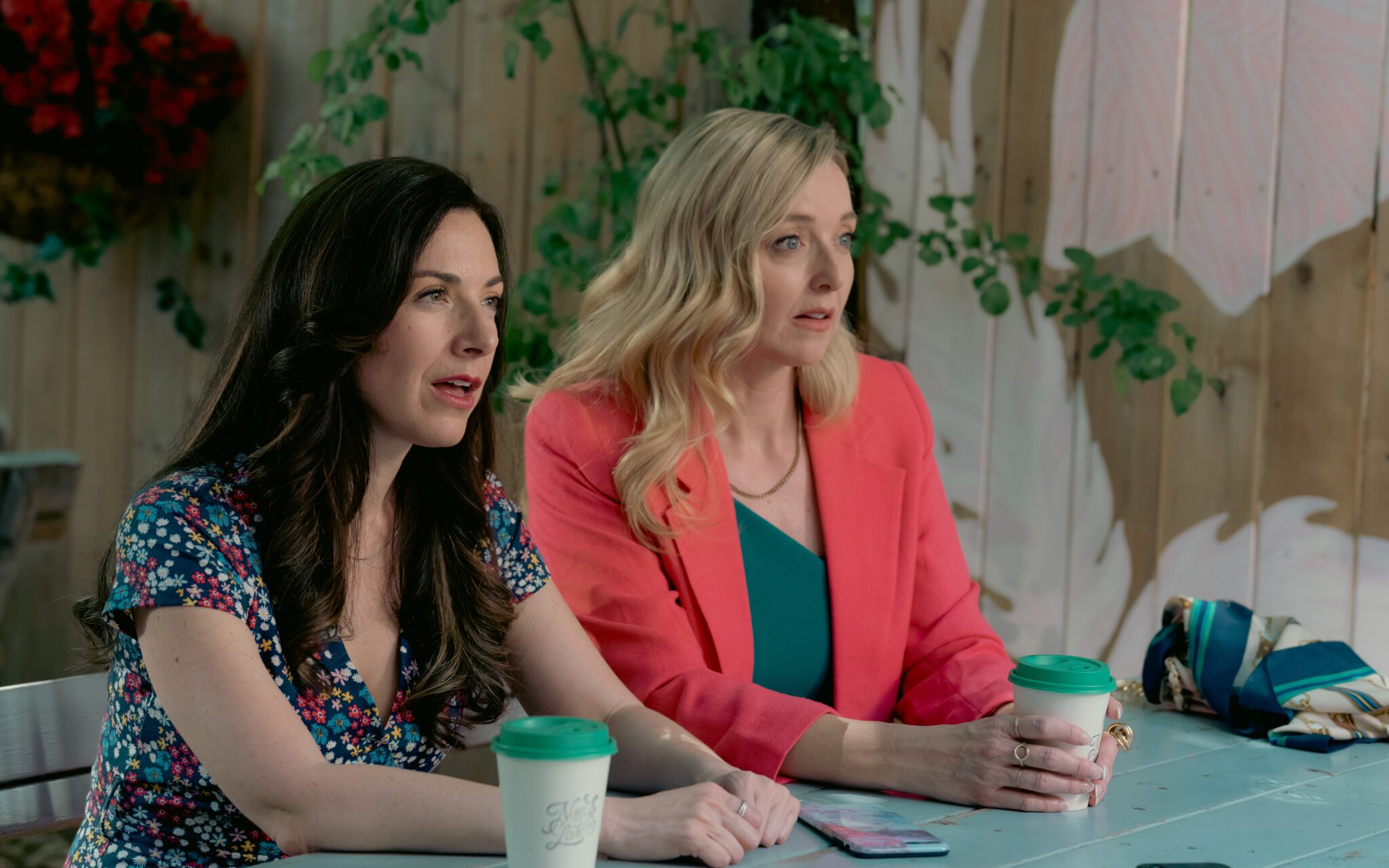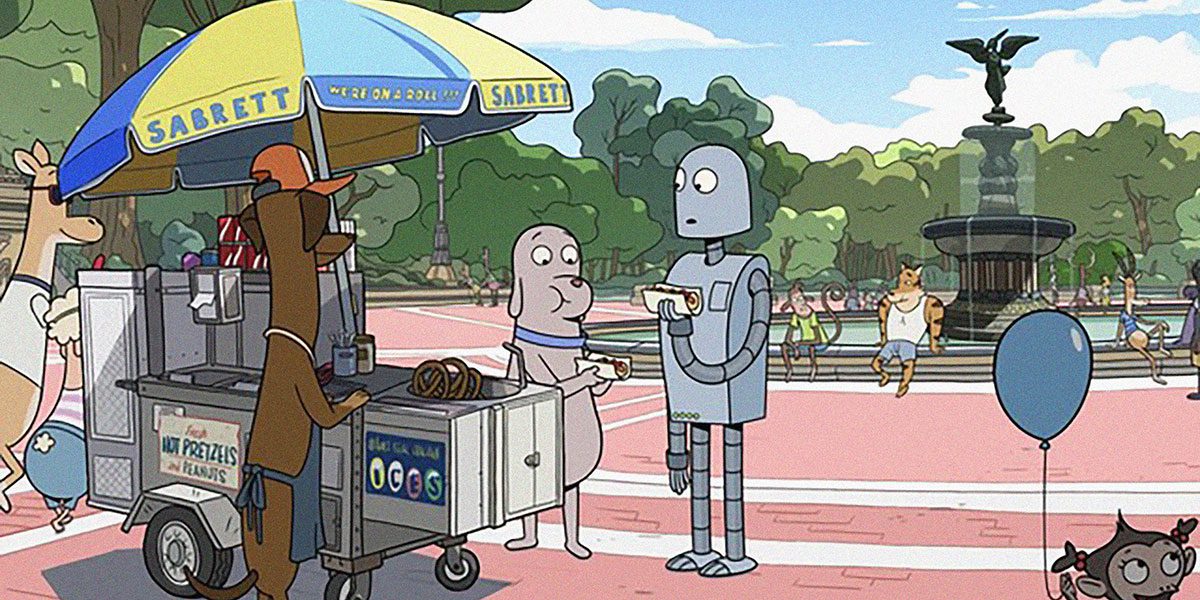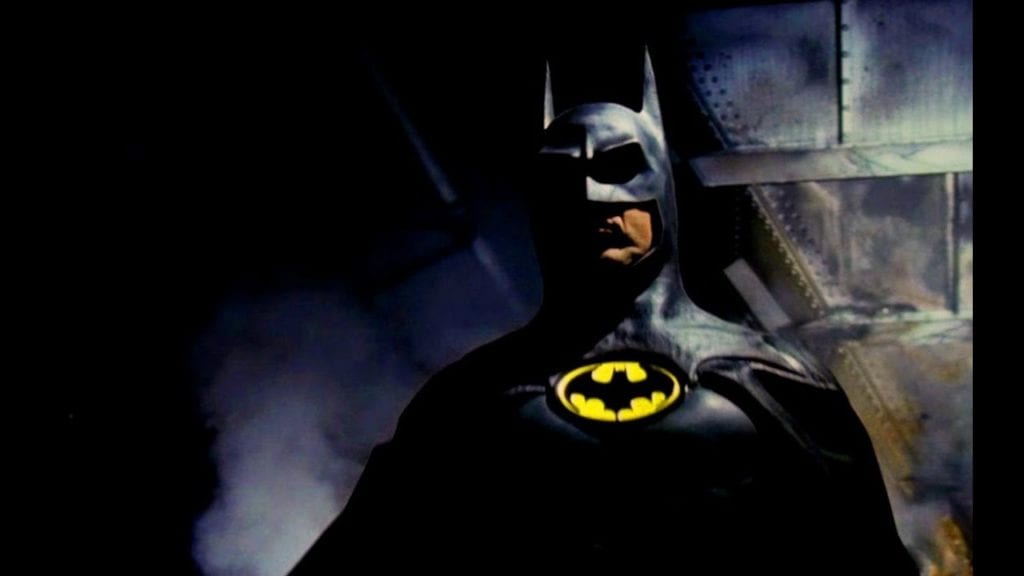
With the Superman franchise limping into its third sequel, DC Comics needed a new flagship in 1989. With a surprising twist, Warner Bros. tabbed Tim Burton, off of the success of Pee-wee?s Big Adventure and Beetlejuice (not exactly heroic fare), to be the director, and the actor known for comedies, Michael Keaton. Thirty years later, the film remains entrenched as one of the best superhero films ever made, striking a tone between the campiness of Adam West/Burt Ward?s 1966 film and the dark shadows of Christopher Nolan?s Dark Knight trilogy. Comic fans, and specifically those of Batman, will rejoice with the first-time 4K HD release of the four 1990s era hero films about the Caped Crusader, and his menagerie of pals and enemies, on the eightieth anniversary of the creation of the Bat!
?Ever dance with the devil beneath the pale moonlight? I like to ask that of all my prey, I just like the sound of it.?– Joker
While Jack Nicholson?s Jack Napier/Joker steals plenty of scenes, Keaton and Kim Basinger as Vickie Vale hold their own in the original tale of the Joker. Written by Sam Hamm (who also scripted the sequel Batman Returns and inspired Nolan?s use of Henri Ducard in Batman Begins), the story has quite a few funny moments, both witty and physical. It bears a Danny Elfman score (he collaborated on Burton?s previous two films), and plenty of Prince music, too, like ?The Future,? ?Partyman,? and ?Batdance? (which topped all three charts). It, of course, boasts Nicholson, Keaton, Basinger, Billy Dee Williams, Jack Palance, Michael Gough, Robert Wuhl, and Pat Hingle as stars of note, and set of special effects, from the Batmobile to the fight scenes, that still hold up after thirty years (which is more than can be said for Star Wars films!)
The storyline and tone were inspired by Alan Moore?s The Killing Joke and Frank Miller?s The Dark Knight Returns, comic book arcs that would later inspire Nolan. This Joker is power hungry, twisted in his thinking and sadism, but clearly intelligent in his manipulation of chemistry and drugs, using the public?s fixation with external appearances. But here, they?re a sharp turn from the silly behavior of the previous mainstream superhero movies, setting the stage for the way that DC would trend toward the good heroes of the world in their constant immersion in the darkness of the villains all around them. Key components remain, like Alfred?s sage advice, Bruce Wayne?s stubbornness toward letting others into his mind and heart, the tension between how Batman is perceived by the media and police versus his actual intent. The incredible layers of the World?s Greatest Detective actually allow the film to show different aspects of Batman/Bruce Wayne in ways that other films have failed to show for other heroes. The promise of the characters first introduced by Bob Kane first came into radical focus thirty years ago in the original. (And it won an Academy Award for Best Art Direction.) Long before the cries of ?Martha!? would trivialize the big screen battle between Superman and Doomsday, Hamm?s twist finds Wayne going mano y mano with his parent?s killer (not Joe Chill).
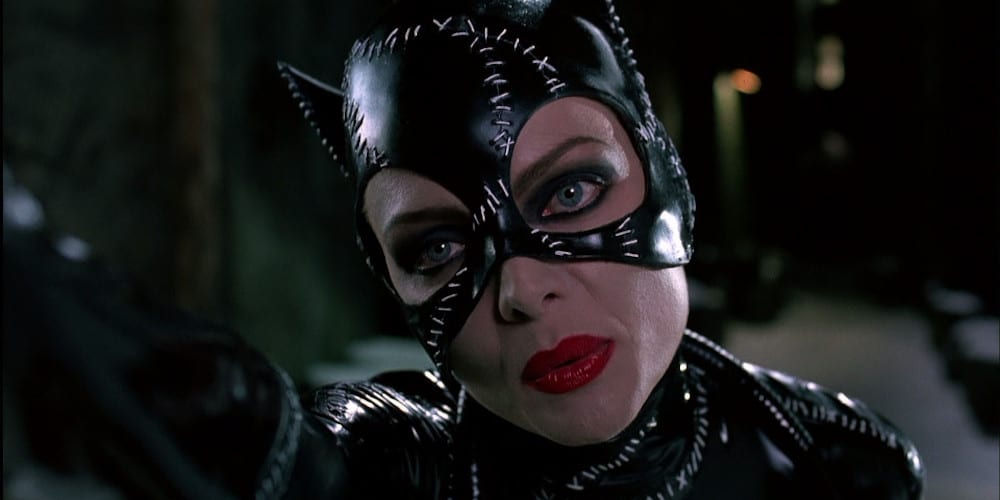
?You’re just jealous because I’m a genuine freak and you have to wear a mask!?– The Penguin
Three years later, Burton and Keaton returned to Gotham, with Michelle Pfeiffer as Catwoman and Danny DeVito as Penguin in Batman Returns. Even darker (?) than the first, it characterizes both of the villains in the film as out for revenge, exhibiting neurosis of their own), but this time, the violence and anger they feel is based on a strong sense of revenge based on their mistreatment at the hands of society and power. While they are evil in their actions, it is quite obvious that the two of them are hurt people hurting other people because of their pain. That provides a different viewpoint into their psyche, but regardless of their motives, they are still violent offenders that Batman must stop. And still, that doesn?t end the problems for Keaton?s Batman: he?s also forced to deal with corrupt (and murderous) businessman Max Shreck, played by the esteemed Christopher Walken. [Burton slid in Paul Reubens as Penguin?s father when Burgess Meredith was unable to provide his talents during filming, which would?ve kept the character ?in the family.?]
The tension of romance between Batman/Wayne and Catwoman/Selina Kyle has been well written in Tom King’s current run on Batman. But somehow, it is made less sexy and more … weird, probably in part to Burton’s iconic take on everything, which we’ve now seen in Alice in Wonderland and Charlie and the Chocolate Factory. Whatever normalcy might have been attributed in the first one (Joker is just … weird… so it’s hard to tell) is completely worn away here with the ‘resurrection’ of Catwoman, the strange-emphasizing take on Penguin, and the dark tones that touch even on the amount of light allowed for in the cinematography. Batman is clearly a hero who lurks in the shadows, touched by the darkness he fights.
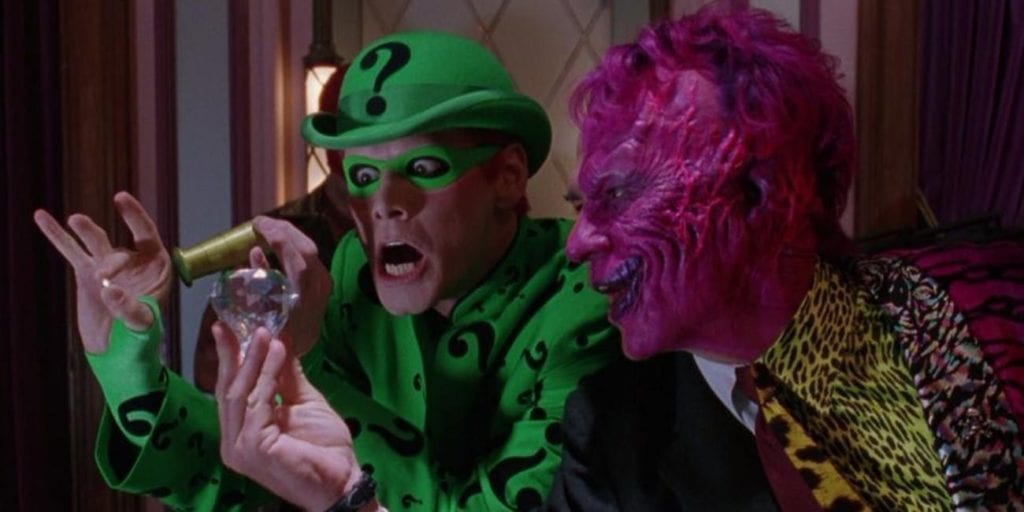
?Riddle me this, riddle me that, who’s afraid of the big black bat??– The Riddler
Three years later, the series was overhauled, with a decision to be more palatable to mainstream audiences, visible immediately in its Highlighter-worthy fluorescent hues. Burton was replaced; Keaton refused to come back. For Batman Forever, Joel Schumacher (St. Elmo?s Fire, The Lost Boys, Flatliners, A Time to Kill) was brought on board, with Val Kilmer (off of Tombstone and The Doors success) as Wayne/Batman. Chris O?Donnell (The Three Musketeers, Circle of Friends) gave a slightly younger demographic with a turn as Robin that he would carry into the fourth and final film of the series. Jim Carey and Tommy Lee Jones camped up the action, which was still darker than the 1960s version, as The Riddler and Two-Face (replacing Williams). Dr. Chase Meridian (Nicole Kidman) works to help Wayne unpack whether he?s meant for crimefighting forever or not, but it?s not nearly as psychoanalyzed as Bale?s overly-sensitized soul searching in the Nolan films. The focus was clearly on being lighter than its predecessors, to better allow for cross-over and family appeal, adding bigger stars and a bigger budget (up twenty million dollars, but earning less worldwide box office than Returns).
The tonal switch worked for families, with less of the innuendo that bounced between Catwoman/Selina and Bats, and a downplaying of the dark violence that permeated the first two films. While the Nolan films would dial it back up (and the show Gotham has certainly not shied away from it), after the brutality of the Joker and the thematic creepiness of Returns (it?s primarily about a guy trying to kill all the firstborn children because his parents once threw him out like trash), Batman Forever feels like it would?ve been better segued from something where Ward and West throw around cheesy one-liners. Is it entertaining? Yes. But the whole shift, and the randomness of some storylines in the third piece, ends up being a jarring follow-up when viewed in succession.
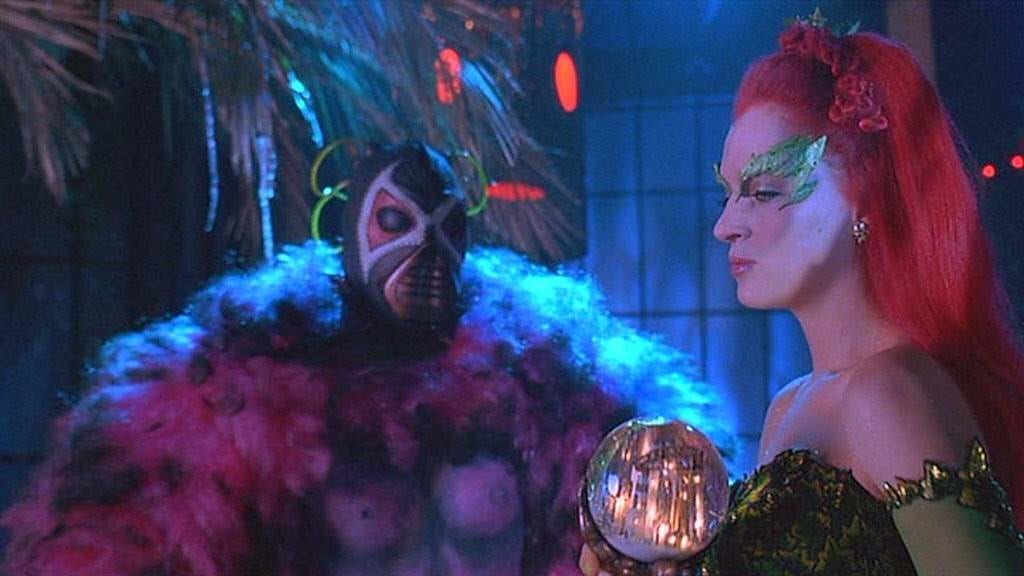
?In this universe, there is only one absolute. Everything? freezes!?–Mr. Freeze
Finally, two years later, George Clooney replaced Kilmer, proving that Batman could be the heroic version of James Bond, initiating a rotating set of actors (Christian Bale, Ben Affleck, Robert Pattinson). Schumacher was back, while Alicia Silverstone swung in as a non-Gordon-related Batgirl, to help the Caped Crusader fight off foes Mr. Freeze (Arnold Schwarzenegger) and Poison Ivy (Uma Thurman), with a budget jump of $25 million. (Little remembered facts: Bane (Jeep Swenson) is actually created in a lab by the same deranged doctor who creates Ivy, not like the comics or Nolan?s version of the hulking sociopath played by Tom Hardy; Coolio plays Jonathan Crane, without ever really getting to show his nightmarish stuff.] Elle Macpherson shows up as Wayne?s girlfriend and Vivica A. Fox unsuccessfully takes her chances trying to seduce Mr. Freeze as his assistant.
The excessively bad film almost killed the cinematic Batman, knocking the character out of the limelight for eight years. While a fifth film, Batman Unchained, was actually considered, with Coolio?s baddie as the main nemesis of Batman, the lack of financial growth and critical panning caused Warner Bros. to pull the plug until Nolan, Bale, Liam Neeson (Ra?s al Ghul), and a revamped Crane (Cilian Murphy) made them millions in Batman Begins. Somehow, this one played even wilder than the West and Ward style of the 1960s in a world that was expecting much more realism. Thankfully, it didn?t prove to be the end of the Batman, but it did leave a poor taste in the mouths of fans who expected something a bit grittier, a bit darker. Batman will always be the hero lurking in the shadows where the really bad guys are, waiting to take on the burden of his city, and proving to be the hard edge of justice Gotham needs to survive.
Collected over the four individual films, there are nearly twenty hours of previously released special features, including director?s commentaries on each of the films, but the whole point of acquiring the individual films on 4K HD with remastered Blu-ray versions (or together as a set on September 17) is to see the films with incredible clarity that potentially puts the initial viewing opportunities we had in the theater to shame! Ultra HD and Dolby Atmos allow for maximum power, just like revving up the Batmobile yourself!
This review was provided in exchange for copies of the films from Warner Bros.



